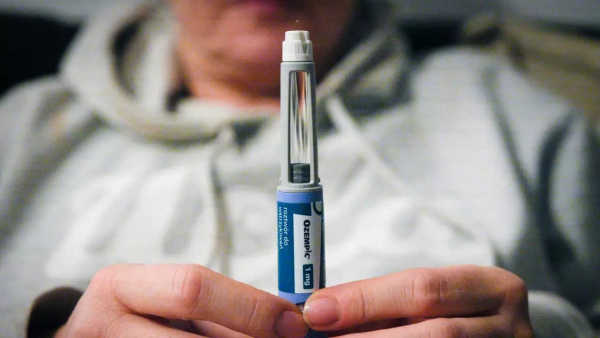
Another one bites the dust.
Amanda Bynes , known for her bright smile and Nickelodeon-cult classics, has jumped into the Ozempic bandwagon.

The former child star shared the update via Instagram, revealing her actual ‘motivation’ that drove her to make the decision of starting Ozempic.
What happened?
Bynes recently revealed on Instagram that she’s embarked on a weight-loss journey with Ozempic, the GLP‑1 receptor agonist originally approved for type 2 diabetes. In a candid video on June 22, she disclosed she currently weighs 173 lbs and is aiming for the 130‑lb mark, with the goal of looking “better in paparazzi pictures.”

Bynes, 39, said in a video posted to her Instagram Story, “I’m 173 now so I hope to get down to like 130, which would be awesome so I look better in paparazzi pictures.”
This latest chapter seems rooted in her long‑standing struggles: Bynes has previously shared battles with depression, body image, and addiction, culminating in a career hiatus in 2010. Her announcement also continues a pattern: in March 2024, she weighed 162 lbs and aimed for 110 lbs, taking steps toward healthier habits.
This time, however, she’s turning to medication to accelerate her transformation. and pledging to share the journey publicly, a rare insight into her process and personal growth.
What is Ozempic?
Ozempic (semaglutide) is a well-known prescription drug that’s used to treat the blood sugar of people with type 2 diabetes. Ozempic is given as an injection under your skin. Ozempic is also used to lower the risk of cardiovascular events (heart attack, stroke, or death) in people who have type 2 diabetes and heart disease.
The Food and Drug Administration first approved the injectable medication for treating diabetes in 2017; the agency approved a drug with a higher dose of the active ingredient in Ozempic, called semaglutide, to treat obesity in 2021, under the brand name Wegovy. Since then, talk of the drug has popped up across the internet. The prescription drug keeps gaining attention as celebrities, a tech mogul, and TikTok influencers have described taking it to lose weight in short time frames.

Why Ozempic?
Well, Ozempic is known for appetite suppression (it slows stomach emptying and promotes satiety), blood sugar regulation (originally for diabetes, but widely used off‑label for weight loss ), and rapid effectiveness (users often experience noticeable drops in weight within weeks).
For someone like Bynes – who has been open about her desire to feel good in photos and maintain confidence – this can be compelling. In an industry fixated on image, it's understandable why she'd choose a fast‑acting tool.
Ozempic effects:
While Ozempic offers rapid benefits, medical experts and users have flagged several concerns – some superficial, others more serious. Let’s dive into what “Ozempic hands,” “feet,” and “eyes” really mean.

Ozempic hands and feet:
First off, it should be noted that these aren’t official medical diagnoses, but fairly common observations among users.
Reports online claimed that ‘Ozempic hands’ and ‘ Ozempic feet ’ are one of the side effects of GLP-1 medications such as Ozempic, Wegovy, and Mounjaro. Netizens have speculated whether celebrities like Sharon Osbourne and Oprah Winfrey have started showing unexpected foot-related side effects.
What exactly happens when one has Ozempic feet?
‘Ozempic feet’ is a side effect of rapid weight loss induced by the drug, referring to the changes in the feet due to a sudden loss of fat padding in the soles. This can lead to a feeling of walking on bone, soreness, and difficulty standing for extended periods. Additionally, the reduced fat can make veins and tendons more visible, potentially leading to a perceived older appearance.
In simpler terms, Ozempic feet is the sagging and wrinkling of one’s skin on the feet. Experts advise users to monitor these changes, adapt footwear and foot care, and seek professional advice from podiatrists or dermatologists if they occur.
Similarly, ‘Ozempic hands’ is the consequence of rapid fat loss in fingers and hands, leaving tendons and veins pronounced, creating a gaunt or skeletal appearance.

Ozempic face :
Ozempic face is the consequence of rapid facial fat loss that can dramatically change appearance. It can trigger sunken cheeks, hollow eyes, sagging jowls, and thinner lips – all of which are common with rapid weight loss. Meanwhile, ‘Ozempic mouth’ describes deeper lines around the lips, an aged or sagging mouth area. Rapid weight loss can also kick off fine lines and cause crepey skin – as a result of dehydration. Loss of collagen/elastin only compounds the effect, leaving the face changed drastically.
These changes are often noticeable within weeks of fat loss, with some Ozempic users saying they suddenly “look 20 years older!”
However, these are not medical danger – purely aesthetic – but emotionally distressing.
Ozempic eyes: Vision risks and cosmetic effects
Although Ozempic hands, feet, and face are not medical dangers that rapid weight loss poses, blurred vision is a common but more serious side-effect – as rapid blood sugar shifts affect the lens of the eye. However, this often resolves after 3 - 4 months.
More seriously, Ozempic has been tentatively linked to non-arteritic anterior ischemic optic neuropathy (NAION) – an “eye stroke” that causes sudden vision loss in one eye. Regulatory agencies in Australia and elsewhere have raised flags after reports of blindness in a small number of cases.
Several users have described experiences like macular edema, floating “squigglies,” eye pain, or sudden design changes in optics – all of which warrant immediate eye care attention.
-
‘Even enemy shouldn’t face such death…’; 9 years ago, ‘Ramayana’s’ Vibhishan was found dead on a railway track, CCTV revealed shocking truth

-
Asha Bhosle makes SHOCKING revelations about her husband, calls him sadist, says, ‘I was four months pregnant, swallowed a bottle of…’

-
The Family Season 3 Release Date: Makers Announce 'Coming Soon'; Netizens Say, 'Can't Wait'

-
Susanna Reid announces breaking Donald Trump news on Good Morning Britain

-
'Complimentary Waterfall Service', Delhi Bound Vande Bharat Express Faces Heavy Water Leakage Problems (VIDEO)
